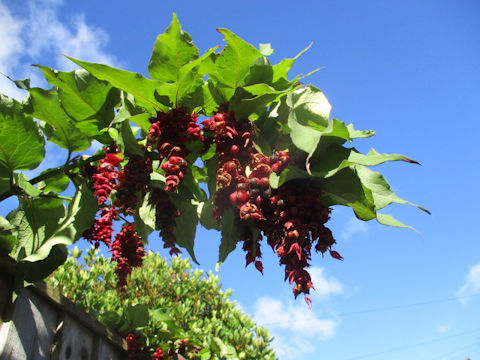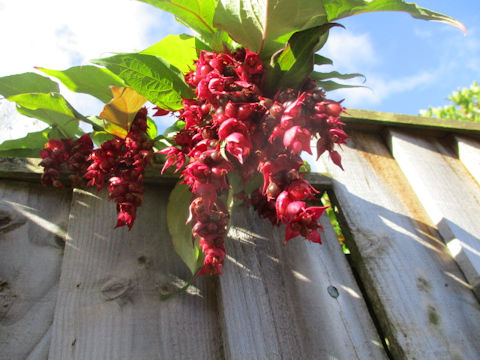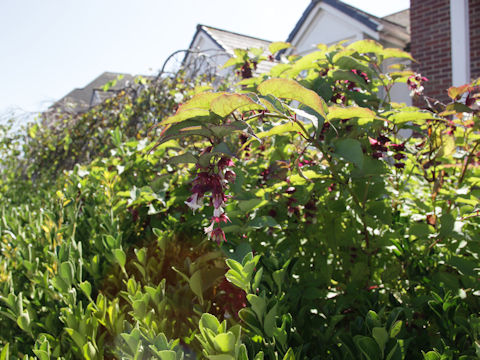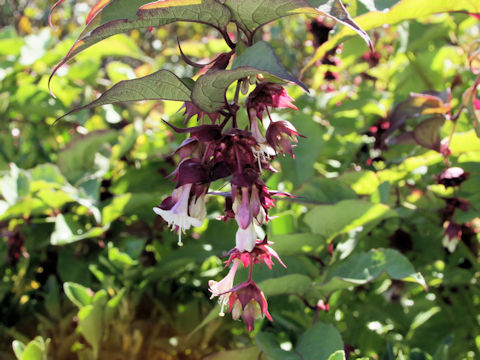 |








|

|
ヒマラヤおよび中国西部、チベット東部に分布しています。森林に生え、高さは90〜180センチになります。茎は中空の竹のように直立し、濃い緑色で卵形の葉が対生します。6月から9月ごろ、長く垂れた穂状花序に、穏やかな香りの白色の花を咲かせます。花は深紅の苞葉に包まれています。花後には、タフィーやキャラメルのような味がするといわれる、肉厚で食用の小さな紫色の実がなります。中国語では「鬼吹簫(gui chui xiao)」と呼ばれます。
|

|
スイカズラ科レイケステリア属の落葉小低木で、学名は Leycesteria formosa。英名は Himalayan honeysuckle。
|

|
The Himalayan honeysuckle (Leycesteria formosa) belongs to Caprifoliaceae (the Honeysuckle family). It is a deciduous shrub that is distributed in the Himalayas and western China and eastern Tibet. It grows in forests and grows 90 to 180 cm tall. The stems are erect like hollow bamboos, and the dark green, ovate leaves are arranged in pairs. The flowers are encased in deep red bract leaves. After the flowers come small, fleshy, edible purple berries that are said to taste like toffee or caramel. In Chinese, it is called a "鬼吹簫" (gui chui xiao).
|

|
[上・中1] イギリス・ランカシャー州プレストンにて、2020年10月11日撮影。(photo by Yumi Gunji)
[中2・下] イギリス・ドーセット州ライム・レジスにて、2011年08月20日撮影。(photo by Jon Suehiro)
|



